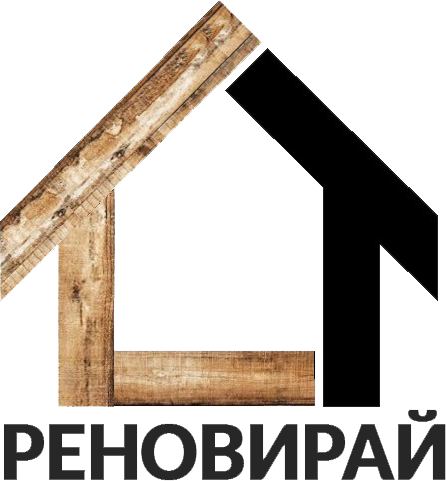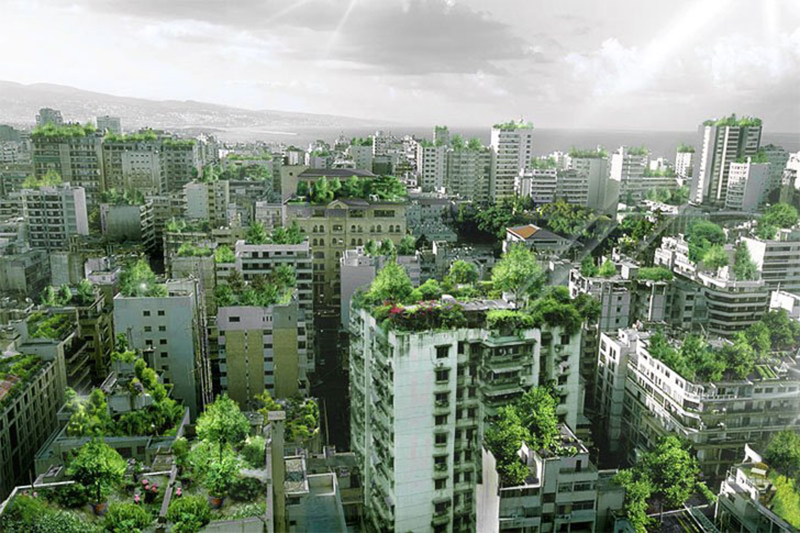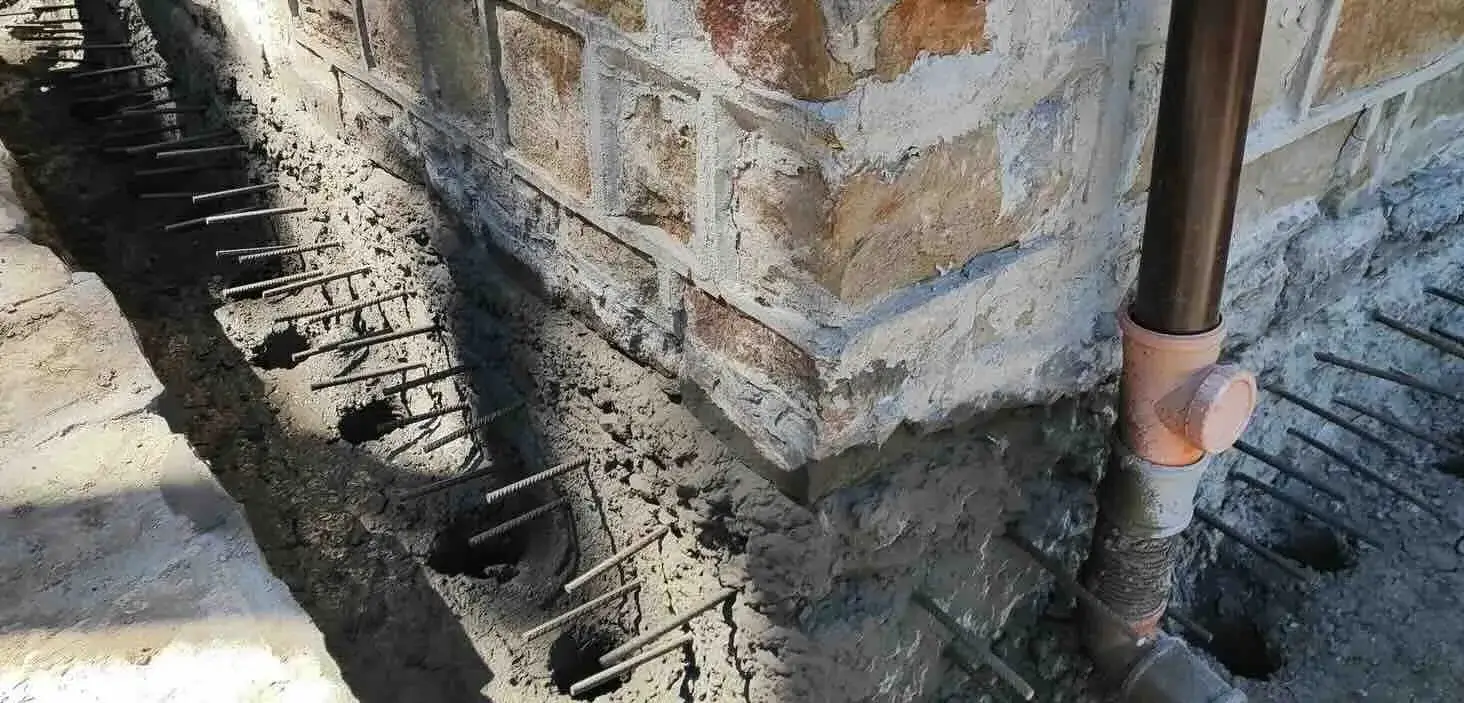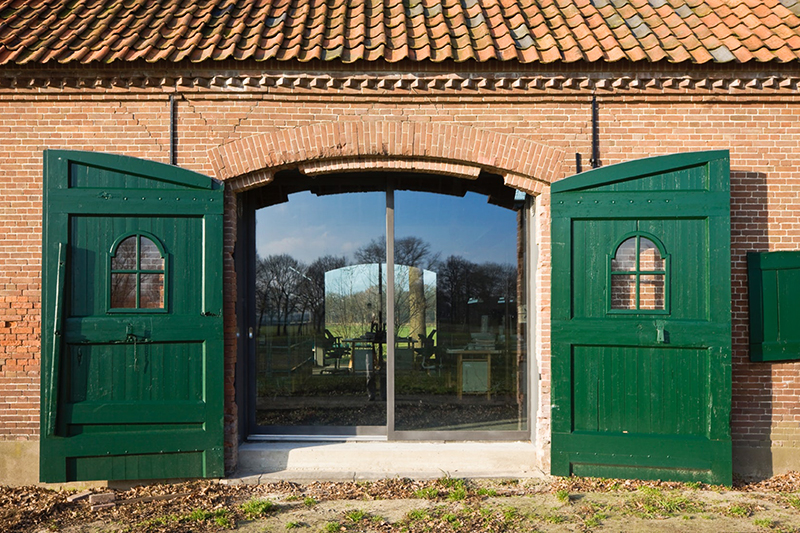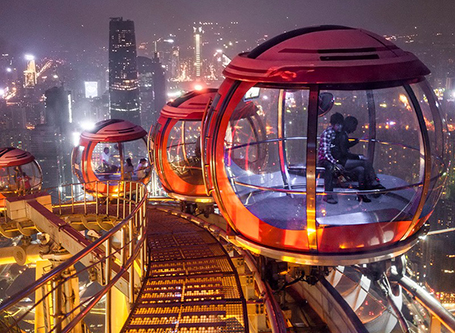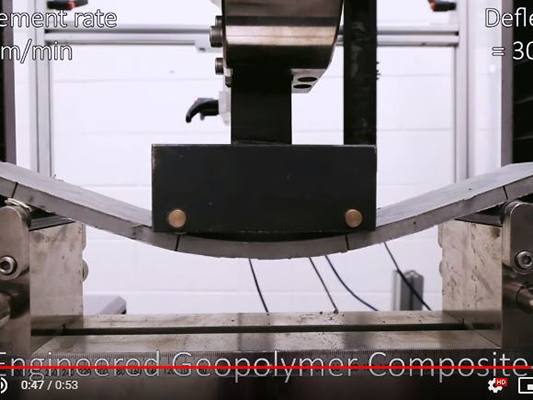In the past 2016, 228,586 new property owners were registered with the Registry Agency. However, the number of transactions with new homes is only a small part of this impressive number. For most new homeowners, along with other indicators determining the profitability of the purchase, the remaining life of the building should be considered with particular importance when choosing a home. This concept is relative and represents a combination of many factors. The most significant of them are the structural safety of the building, moral and physical depreciation, maintenance costs, possibilities for reconstruction and increasing the useful built-up area.
Functional rearrangements
The first criterion by which the remaining life of a structure is determined is its functionality and the possibilities for changing its purpose. In recent years, the economic interests of owners and investors have created a wave of redevelopments. Modern business needs are transforming semi-underground premises into shops, former factories into shared workspaces, apartments into restaurants and entertainment venues. Thus, a large number of premises and entire buildings with a reduced or completely exhausted resource, according to their original purpose, are being put back into operation.

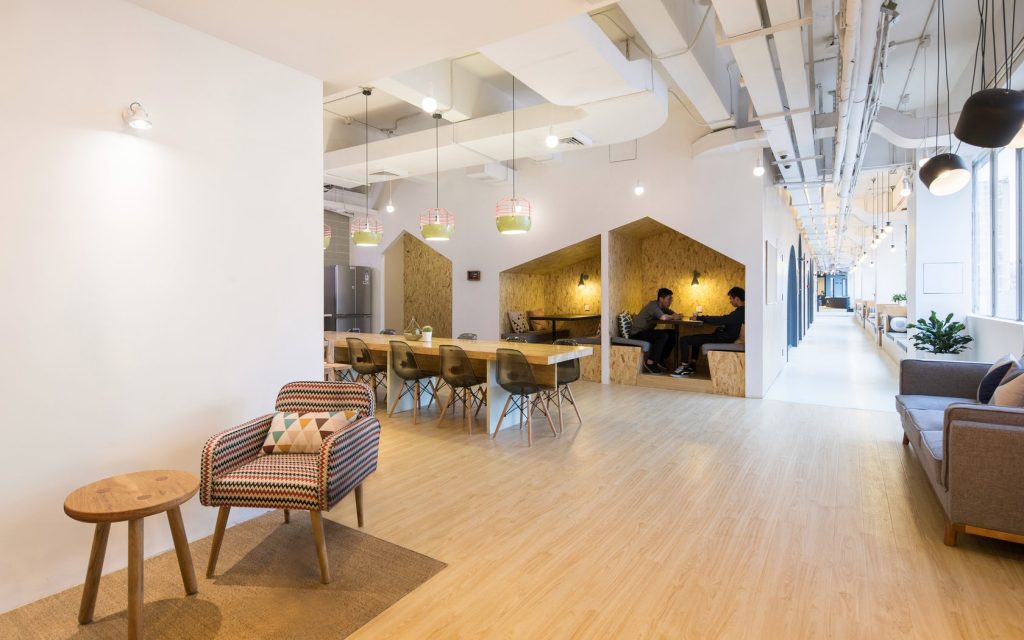
This sustainable trend is possible thanks to the implementation of original architectural solutions, significantly increasing the remaining life of, at first glance, completely worn out physically and morally buildings and premises. Particularly flexible and modern, it is found on both large and small scales. Allowing many small businesses to save on high rents or capital investments for new construction, at the same time realizing environmental savings through full use of the already constructed building stock.

Constructive assurance
A prerequisite for this to happen is the most important indicator determining the remaining life of a structure, namely - its structural reliability. It is quite logical that this reliability is constantly increasing worldwide. Thanks to the rapid development and application of new technologies for design and implementation, the increasing requirements for the seismic reliability of buildings, the increased international exchange of knowledge and regulatory documents, this indicator is constantly increasing. These factors also guarantee a longer and accident-free life of the structure. In addition to increased reliability, the development of construction technologies allows for the implementation of bolderarchitectural solutions even in earthquake-prone areas, as well as increasing the number of storeys in buildings.
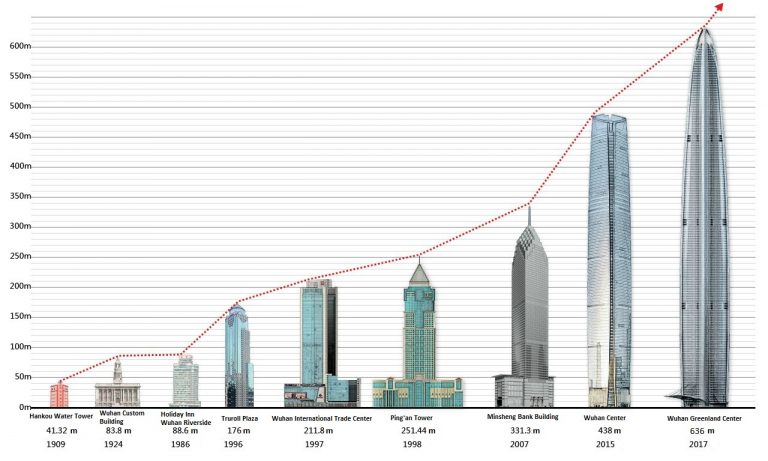
Construction quality
The widespread claim about the higher quality of construction before the 1990s of the last century is greatly exaggerated. The main argument in support of this thesis is the inability of the majority of old buildings to meet the modern design requirements that are mandatory for new buildings. During inspections of such old buildings, serious discrepancies are often found between the standards in force at the time and what was actually implemented. There are also quite a few buildings that were built without the necessary construction documentation, but were subsequently legalized only on the basis of architectural surveys. The test of time often covers only the quality of the waterproofing of the foundations, the finishing works, the settlements of the foundations and the functionality of the premises and the adjacent areas around the building. The majority of the old building stock could really exist for tens and hundreds of years without the need for structural repairs, but only with high-quality foundations, lack of seismic impacts and floods. The consequences of the more significant earthquakes that have occurred on the territory of Bulgaria over the past 100 years are completely or partially destroyed cities, tens of thousands of demolished buildings and a significant number of human victims.

Католическата болница в Пловдив след Чирпанското земетресение
Despite the better modern standards and design methods, both in the past and today there are no shortage of examples from practice with serious violations. Most often they are at the stage of project implementation. The most common defects that reduce the life and safety of a building structure can be listed as:
• poorly vibrated concrete, insufficient reinforcement coverage
• insufficient reinforcement and sagging of horizontal elements
• excessive reinforcement of horizontal elements
• incorrect placement of reinforcement during installation
• displacement of the reinforcement skeleton during concreting
• low quality of the materials used
• presence of high humidity in load-bearing elements
• uneven settlement of foundations due to poor foundation or water filtration
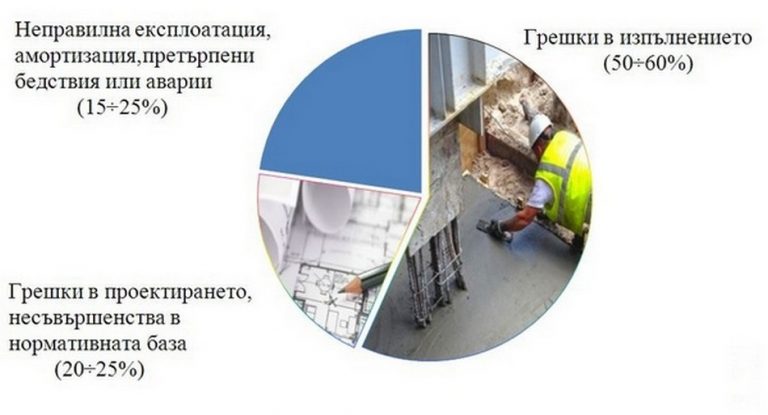
Statistics on the causes of accidents in construction
Due to the great variety and different importance of these defects on the safety of the building, a clear answer cannot be given to the question "how long is the life of a given type of structure". It is more important to pay attention and analyze to what extent these defects are remediable and whether this is cost-effective.
In many cases, defects are relatively easy to fix with minimal capital investment. For example, in cases of insufficient reinforcement, composite systems could be used, the application of which takes hours and significantly increases the safety of the entire structure.

Some renovations, such as adding underground waterproofing, not only improve the conditions in which the structure is located, but also increase the quality of the living environment. Reduced humidity ensures better thermal insulation properties of the partition elements, eliminates the presence of mold and mildew, and improves the subjective feeling of air cleanliness.

In other cases, achieving acceptable levels of security and increasing the life of the building are financially unprofitable. Especially when it comes to small buildings in developed urban areas, where zoning indicators allow for larger building parameters and there is interest from private investors.

Moral obsolescence
The obsolescence of premises and buildings must also be taken into account in a long-term investment such as real estate.
For example, panel blocks with a structural life of over 100 years, which account for over 20% of housing in the country, do not tolerate special options for reconstruction. In foreign practice, projects are being implemented that completely change their appearance, energy efficiency and market value.
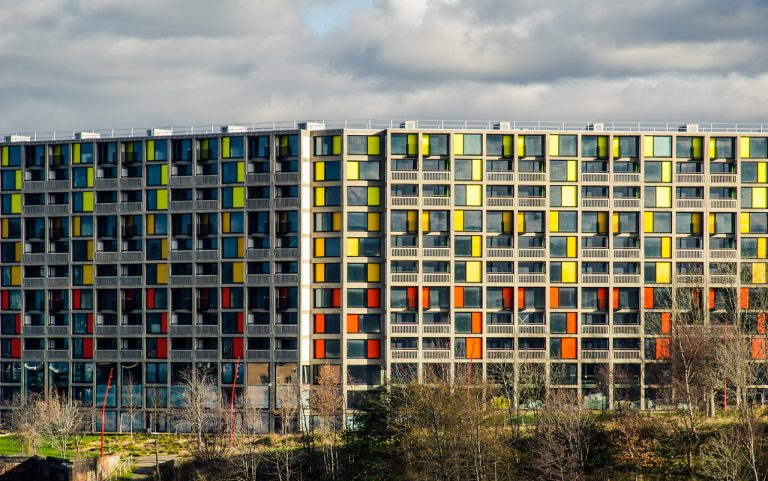


In the most general case, the design life of investments in construction and related equipment varies within the following limits:
• improvements to the surrounding area – 20 years.
• life of buildings – 25÷60 years.
• their furnishings and equipment – 2÷15 years.
After a certain period of time, the funds required for repairs and renovation of the building stock increase dramatically and the investment becomes unprofitable.
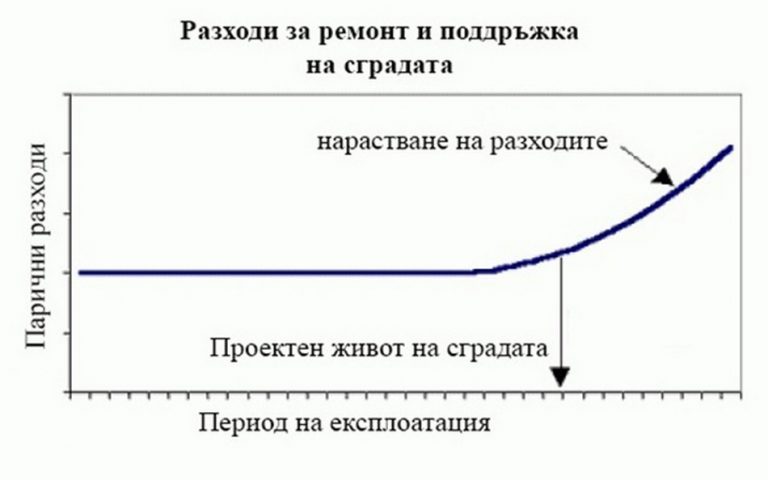
You can turn to us for assistance in choosing a new, safer home. Making the right, informed decision when purchasing saves owners large expenses in the future.
Don't hesitate to contact us!
Author: Dr. Eng. Teodor Todorov
